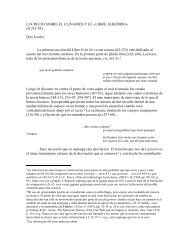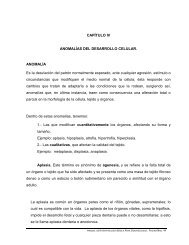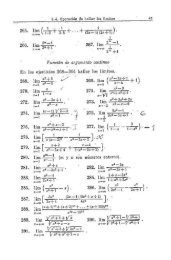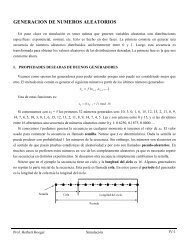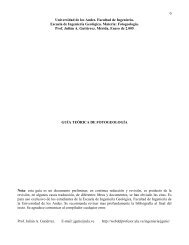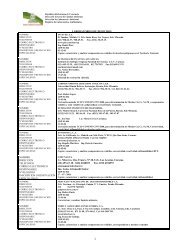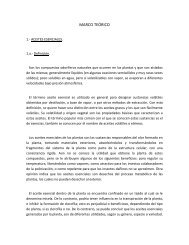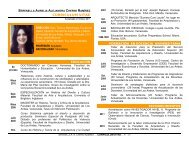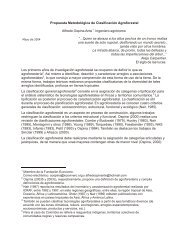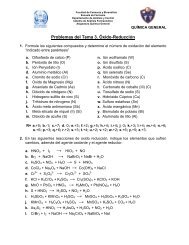Macrocyclic Ligands - Web del Profesor
Macrocyclic Ligands - Web del Profesor
Macrocyclic Ligands - Web del Profesor
You also want an ePaper? Increase the reach of your titles
YUMPU automatically turns print PDFs into web optimized ePapers that Google loves.
8 MACROCYCLIC LIGANDS<br />
PhAs As(Ph)Li<br />
As(Ph)Li<br />
+<br />
Cl Cl<br />
Scheme 7<br />
PhAs<br />
As<br />
Ph<br />
AsPh<br />
Cryptands are usually synthesized via sequential condensations<br />
between a diamine and an acid chloride, which<br />
yields a diamide, followed by reduction with LiAlH4<br />
to give the macromonocycle. Condensation with another<br />
H2N O O NH2 O O<br />
Cl O O Cl<br />
HN<br />
O O<br />
O O<br />
NH<br />
HN<br />
+<br />
O O<br />
Cl O O Cl<br />
N<br />
O O<br />
O O<br />
O O<br />
O<br />
O O<br />
O<br />
equivalent of acyl chloride will yield the bicyclic precursor,<br />
which can be reduced by B2H6 to give the bicycle<br />
(Scheme 8). 5<br />
Compartmental ligands (16) are derived from diketonates<br />
and triketonates and are usually synthesized from Schiff base<br />
reactions of the ketone with a diamine. 28<br />
Catenands (17) are also made using the metal ion template<br />
effect. A bis-complex is formed from an α,α ′ -disubstituted<br />
o-phenanthroline. Then the initial product is treated with a<br />
diiodoalkane to accomplish the ring closure. 29<br />
3.4 Polyoxa Macrocycles<br />
Polyethers were originally synthesized by template<br />
assistance from an oligo(ethylene glycol), monoglyme, and<br />
potassium t-butoxide (Scheme 9). 4<br />
O O<br />
HN<br />
NH<br />
O O<br />
O O<br />
NH<br />
N<br />
O O<br />
O<br />
N<br />
Scheme 8<br />
O<br />
O O<br />
O<br />
O<br />
N<br />
B2H 6<br />
LAH



